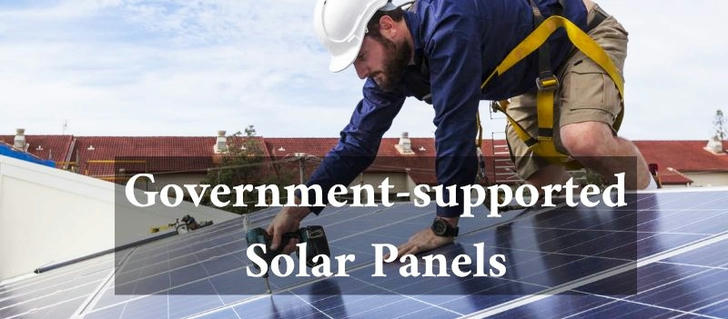Government-Funded Solar Panels in the United States
The U.S. government continues to expand its renewable energy policies, helping households and small businesses transition to solar power through tax credits, rebates, and financing support. These incentives aim to reduce energy costs and promote national sustainability goals while empowering homeowners to invest in clean energy technology.

🌞 Federal Solar Incentives and Tax Credits
The Federal Solar Investment Tax Credit (ITC) and the Residential Clean Energy Credit remain the two main national incentives in 2025. Through these programs, homeowners can claim up to 30% of the total installation cost of solar systems, including panels, labor, and energy storage. These credits apply to both new installations and upgrades, making them essential for long-term savings and increased home value.
Additionally, the USDA Rural Energy for America Program (REAP) provides financial support for rural small businesses and farms to adopt renewable energy solutions, covering a portion of system costs or offering low-interest loans.
🏙️ State-Level Programs and Regional Differences
Each state offers its own form of solar incentives, creating regional opportunities for residents:
California: The Self-Generation Incentive Program (SGIP) and local utility rebates offer additional support for battery storage and home solar projects.
Texas: Through Solar Rights Laws and property tax exemptions, solar system owners can reduce annual costs significantly.
Florida: The Solar Energy Systems Incentives Program removes sales tax on solar equipment and provides rebates via utility companies.
New York: The NY-Sun Initiative supports both residential and community solar, offering direct cash incentives and loans.
Arizona: Homeowners may receive a state tax credit of up to $1,000 for certified solar installations.
👨👩👧 Age-Based Benefits and Accessibility
Government-backed solar programs are designed to support different age groups across the U.S.:
25–39 years: First-time homeowners and young families can access clean energy loans and energy-efficient mortgage programs with extended repayment terms.
40–59 years: Working professionals benefit from combined efficiency programs, pairing solar panels with home upgrades such as insulation and smart energy monitoring.
60 years and older: Retirees can access specialized financing with fixed low interest rates or longer repayment periods through state utility programs and local partnerships.
📝 How to Apply for Solar Incentives
Applications for solar-related funding can be made through the Database of State Incentives for Renewables & Efficiency (DSIRE) or official energy agency websites. Applicants typically need to provide proof of residence, income verification, property details, and recent utility bills. Once eligibility is confirmed, homeowners can choose certified contractors listed under the U.S. Department of Energy’s Clean Energy Directory to begin installation.
⚠️ Funding Deadlines and Urgency Reminder
Most government and state-level programs operate under limited funding cycles. The 30% federal tax credit is currently active but subject to reduction after 2032. Some state and local rebates are scheduled to end once annual budgets are exhausted. Homeowners are strongly encouraged to apply early to secure available benefits before funding or eligibility deadlines expire.
💰 Financing and Solar Loan Options
For those seeking flexible payment options, several financing solutions are available:
PACE (Property Assessed Clean Energy) programs allow repayment through property tax bills.
Green Energy Loans from banks and credit unions provide low-interest financing for renewable energy projects.
Solar Power Purchase Agreements (PPA) let homeowners pay only for the electricity generated without owning the panels.
These financing options make solar energy more accessible while complementing existing government programs.
🌍 Conclusion
Government-funded solar programs across the United States have made renewable energy adoption more practical than ever. By combining federal tax incentives, state-level rebates, and low-interest green loans, residents can significantly reduce both upfront installation costs and long-term energy expenses.
